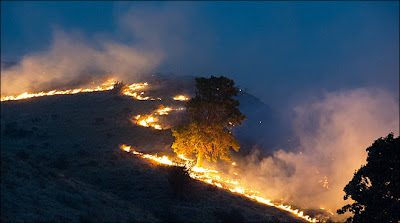Before we talk about
Wildfires I would like for us to take a moment and think about a true American
Hero that passed away yesterday. Neil Armstrong was an explorer that many of us
wished we would one day be. There are only a few pictures that when you see
them they not only bring back the moment in time of where you where, what you
were doing when it was first viewed. Pictures that need no captions, pictures
that we all feel we are part of, pictures that shaped the future. This is one
of those pictures.
Wildfire Headlines in today’s
newspapers ….
Growing wildfire
destroys 84 buildings, threatens 900 others in Northern California
Fast-moving wildfire forces evacuations in Montana
Serbia evacuated thousands of villagers on Saturday and
called in the army to help fight wildfires raging through the drought-hit
western Balkans.
Yesterday’s info from the National
Incident Command Center
Saturday, August 25, 2012 – 0530 MT
National Preparedness Level 4National Fire Activity
Initial attack activity: Light (151 new fires)
New large fires: 12 (*)
Large fires contained: 10
Uncontained large fires: ** 27
Area Command Teams committed: 1
NIMOs committed: 2
Type 1 IMTs committed: 8
Type 2 IMTs committed: 10
** Uncontained large fires include only fires being managed under a full suppression
Cache Creek, Wallowa-Whitman NF. IMT 2 (Rapp).
Forty-one miles northeast of Enterprise, OR. Brush and grass. Running with
short-range spotting. Structures threatened.
Chips, Plumas NF.
IMT 1 (Opliger). Twenty miles northwest of Quincy, CA. Timber and brush.
Moderate fire activity with short-range spotting. Communities threatened.
Evacuations in effect.
North Pass,
Mendocino NF. IMT 2 (Wakoski). Twenty-five miles northeast of Covelo, CA.
Logging slash. Active fire behavior with torching. Structures and communication
site threatened. Evacuations and area closures in effect.
Bagley,
Shasta-Trinity NF. IMT 2 (Whitcome). Seven miles west of Big Bend, CA. Timber.
Active fire behavior with torching and spotting. Structures and high voltage
power lines threatened. Creeping and smoldering. Structures threatened.
Trinity Ridge,
Boise NF. IMT 1 (Quesinberry). Transfer of command from IMT 1 (Harvey) to IMT 1
(Lund) will occur today. Seven miles northwest of Featherville, ID. Timber.
Active fire behavior with group tree torching and spotting. Numerous structures
threatened. Evacuations and area closures in effect.
Halstead,
Salmon-Challis NF. NIMO (Houseman). Eighteen miles northwest of Stanley, ID.
Timber. Crowning. Numerous structures and power lines threatened. Evacuations
in effect. Area closures in effect.
Make sure your
campfire doesn't become a wildfire
With Labor Day just around the corner, many
individuals and families will be headed to the forest, ocean, mountains or high
desert for one last summer camping adventure.
State fire officials are asking those folks
to be extremely cautious with their campfires given current conditions. The
National Weather Service forecast for the weekend calls for above-normal
temperatures and below-normal precipitation across the state.
Campers are reminded that recreational
fires are not allowed on many public lands except in approved designated campgrounds.
“Rules/Regulations change every day and vary widely. I
would advise people to check before you go and again when you arrive at your camping designation.
Here are some reminders Smokey Bear and Friends to make sure you don’t
start a wildfire.
IN THE BACKCOUNTRY
• If you’re in the backcountry, and
especially during high-risk times, it’s best to avoid having a campfire
altogether. Oftentimes campfires are prohibited above a certain elevation or
near certain bodies of water.
• If you must have a fire, follow the Leave
No Trace principles:
Make sure to check and follow all
regulations. In some areas, regulations change depending on the season because
of fire danger.
Use only established fire rings, keep your
campfire small and never leave a fire unattended.
Use small pieces of wood gathered only from
the ground and never break branches or cut down trees for a campfire.
After a campfire is completely out and cool
to touch, and after all the wood has turned to coal, scatter the cool ashes.
CAMPFIRE SAFETY
• Make sure a campfire is allowed. Check to
see if there is a burn ban in your county.
• Find a shady spot away from dry logs,
branches, bushes, needles or leaves.
• Make sure there are no overhanging tree
branches near the fire.
• Use existing fire rings where it is safe
to do so. Don’t build fire rings in roads.
• Keep campfire rings small, and use wood
no bigger than the ring.
• Never leave a campfire unattended.
• When leaving, make sure your fire is dead
out. Very carefully feel all sticks and charred remains. Feel the coals and
ashes. Make sure no roots are smoldering.
• Drown the campfire with water, and stir
charred material.
• If it’s too hot to touch, it’s too hot to
leave.






































